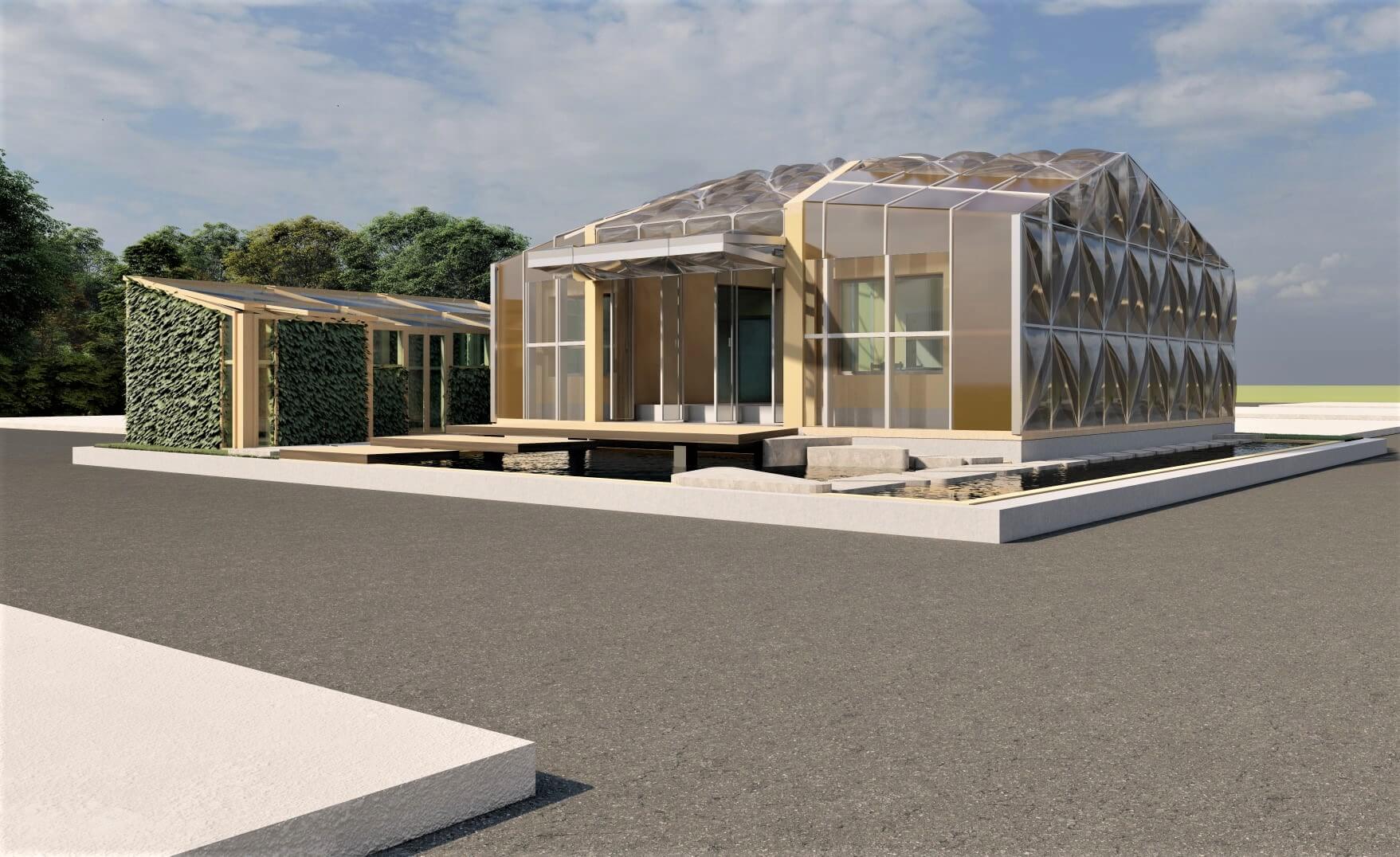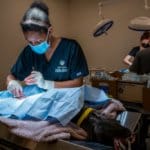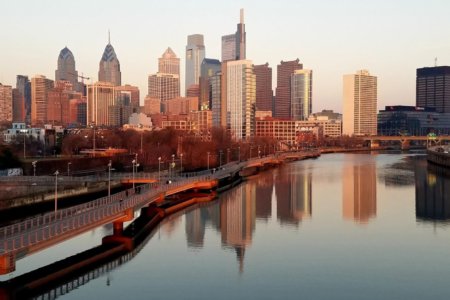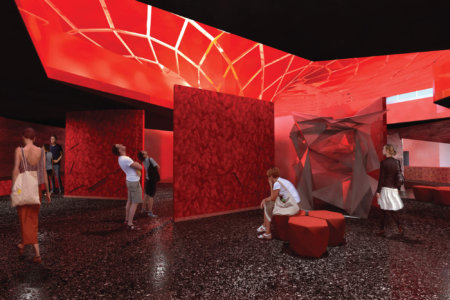Picture a sustainable, innovative and versatile envelope that wraps around an entire home. Functions include dynamic thermal control, light transmission, ventilation and air purification. Design-wise, it’s sleek. Ambition sears through it.
The creators? Thomas Jefferson University’s College of Architecture & The Built Environment (CABE) students. In collaboration with Xi’an Jiaotong-Liverpool University in Suzhou, China, their structure will be constructed over the course of two weeks in September. In October, it will be judged in the Solar Decathlon China 2021 design challenge — a scientific competition centered on green buildings and solar energy technology applications — and displayed as part of the competition near the 2022 Winter Olympics in Beijing.
“It’s kind of empowering to be in this leadership position,” explains Architecture student Olivia Birritteri. “It was vastly different than other projects we worked on mainly because we had to deal with the realities of making ideas feasible in terms of construction, timing and budget constraints.”
At Jefferson, CABE students get a head start on two fronts: their careers and in improving lives through design. “The College of Architecture & The Built Environment at Jefferson stands out because we’re constantly working on projects with different majors,” shares Birritteri. “Collaboration is key in an architectural education because that’s how it is in the real world too.”
The team in Philadelphia worked with peers from Xi’an Jiaotong-Liverpool University and the Zhejiang University-University of Illinois at Urbana-Champaign Institute. Despite travel restrictions and time zone differences, the team made the best of the situation by using apps like Autodesk BIM 360, DingTalk and WeChat to keep each other in the loop.
“This team of 11 students had to give up some ideas to achieve the larger goal, and they did very well switching over from a concept near and dear to their hearts,” says associate professor Dr. Kihong Ku. “They were highly driven, and their nimbleness is pretty amazing. As an instructor, I learned a lot by working with them.”
In a previous review, the team was ranked second. “We are passionate enough to secure the top spot,” Birritteri says. In October, the winners will be announced. Regardless of the outcome, the team has already won in various ways.
Cevan Noell, a team member, said it best: “It was a long project in school terms, but not through the lens of the real world. This gives us a leg up on other students in architecture programs, and it’s a great portfolio piece.”
Birritteri’s experience has even secured her a post-commencement job at Stanev Potts Architects. Like all CABE graduates who have come before her, she will step into it with confidence.
Master’s degrees for the future of architecture
At Jefferson, the next generation of design and construction professionals get the education they need to create an equitable and sustainable future. Curricula emphasize specialized knowledge unique to each discipline, paired with interdisciplinary collaboration that prepare students for practice in the global market.
The two-year Master of Architecture (M.Arch) “blends academic scholarship, the liberal arts, hands-on professional learning and interdisciplinary collaborations,” according to Ku. In this NAAB-accredited program, students follow a curriculum that focuses on innovation and sustainability.
They learn essential design research and theoretical skills, as well as how to fuse them with practical knowledge of structures, materials, construction management, mechanical systems, business, and many other disciplines. All of these provide students a competitive advantage in the market, Ku says.
“As a result, our students have successfully led and participated in various design challenges internationally, nationally, and regionally — including design competitions, exhibitions, industry partnerships, design build and community engagement projects,” Ku explains. “These include the John Stewardson Memorial Competitions, US Solar Decathlon Design Challenges, and many others.”
The Master of Urban Design – Future Cities program aims to produce a new generation of urban designers, architects and researchers who wish to develop cities and communities that are sustainable and healthy. “Focused on envisioning the future, the program spotlights pressing contemporary issues with far-reaching consequences, such as the need to develop urban resiliency and carbon neutral communities and to harness the potential of smart technologies to achieve environmental wellness on multiple scales in response to rapid urbanization and climate change,” explains program director, Dr. Peng Du. “It prepares graduates for academic, municipal, and other entities such as industry, non-government organizations, and public agencies.”
Jefferson students land jobs in architecture, technology and construction firms as well as many other areas. They have interned and started their careers at firms such as Stantec, Gensler, WRT, Nelson, HOK and Jacobs.
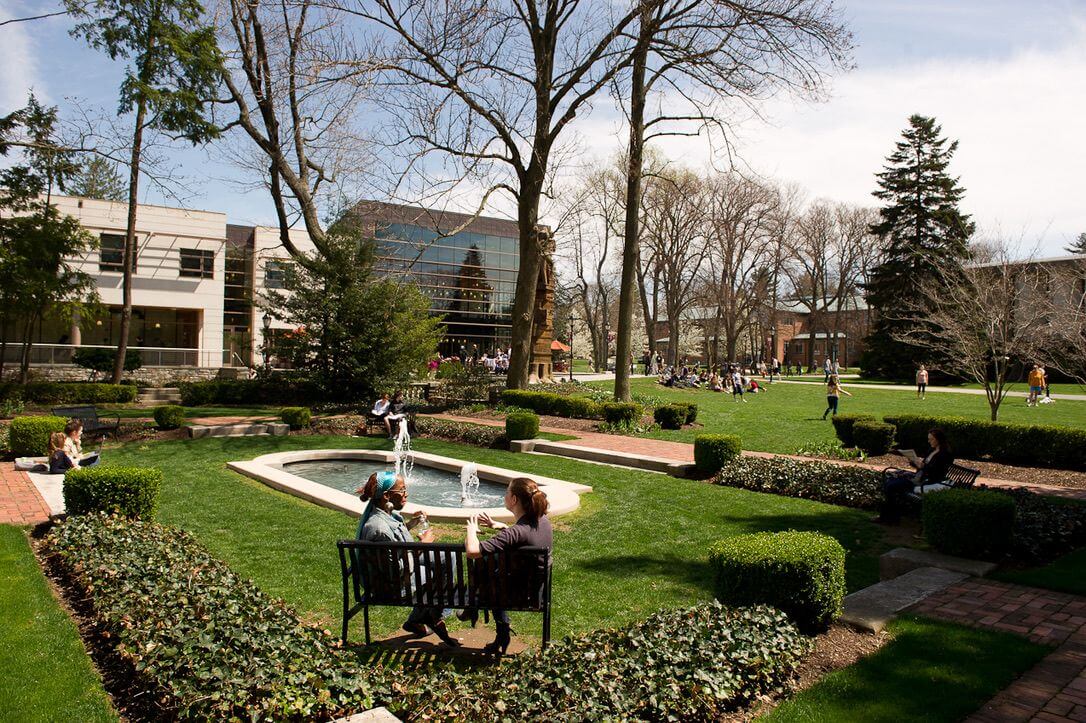
“With its thriving design and construction industries, Philadelphia serves as our urban lab, furnishing students with professional experiences in a vibrant metropolitan area,” shares Peng Du, Master of Urban Design – Future Cities program director. Source: Thomas Jefferson University
The College also offers an MS in Architecture, MS in Construction Management, MS in Geospatial Technology for Geodesign, MS in Historic Preservation, MS in Interior Architecture, MS in Real Estate Development, MS in Sustainable Design and a PhD in Architecture and Design Research.. Accelerated, customizable dual degrees are also available for those who want to break out of disciplinary silos.
The inspiring city of Philadelphia
Since the 1950s, Philadelphia has stood out as a hub for modern architecture, with notable architects such as Louis Kahn and Richard Neutra gracing its streets. In fact, it is the US’s first “World Heritage City,” filled with 67 National Historic Landmarks.
Today, it is still the best city to study architecture. The city has several new buildings that are dubbed “iconic,” like the green-roofed Barnes Foundation (home to more Cézannes than in all of France) and the revamped Comcast Innovation and Technology Center designed by Sir Norman Foster.
“Philadelphia is rich in its history — both culturally and socially,” enthuses Jefferson architecture student Breanna Sheeler.
Philadelphia does boast both. It is the best place for international students to live life to the fullest. You’ll see them jogging in Fairmount Park, getting soft pretzels at one of the many food carts, dancing the night away at a pop-up event, or relaxing with their thoughts by the Schuylkill River.
If you’re eager to join them, find out more about the College of Architecture & the Built Environment here.
Follow Thomas Jefferson University on Facebook, Twitter, Instagram and YouTube

